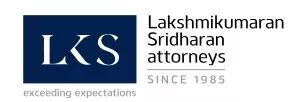The Bombay High Court has set aside the show cause notice invoking the provisions of Section 122(1A) and Section 137 of the CGST Act, 2017 to impose huge penalty and to initiate prosecution against the petitioner, who was an individual and employee (Senior Tax Operations Manager cum Authorised Person) of the company against whom demand was raised.
The notice had alleged that the petitioner had committed offences of the nature as described under the provisions of Sections 122(1)(i) of the CGST Act, 2017, which led to the evasion of GST by the company.
The Court in this regard observed that as per the intention of the legislature, a person who would fall within the purview of Section 122(1A) should necessarily be a ‘taxable person', who would be in a legal position to retain the benefit of tax on the transaction covered under clauses (i), (ii), (vii) or clause (ix) of sub-section (1), and at whose instance, such transaction is conducted.
The Court noted that the said provisions are not applicable to an individual like the petitioner, and that there was no material that it was at the instance of petitioner that transactions were conducted so as to make the petitioner liable to penalty equivalent to the tax alleged to be evaded or ITC availed or passed on by the company.
Further, in respect of penalty under Section 137, the Court in Shantanu Sanjay Hundekari v. Union of India found it intriguing as to how such penal provision could be foisted against the petitioner, when the show cause notice was itself a demand cum show cause notice.
According to the Court, such proceedings would be in the nature of a prosecution necessarily involving the applicability of Section 134. The High Court also found it ill-conceivable to read and recognize into the provisions of Sections 122 and 137 any principle of vicarious liability.
The content of this article is intended to provide a general guide to the subject matter. Specialist advice should be sought about your specific circumstances.


